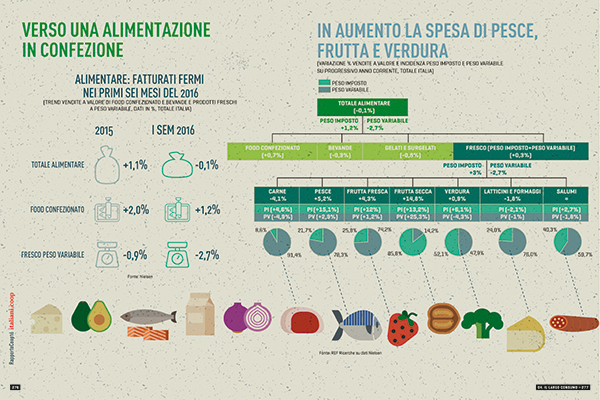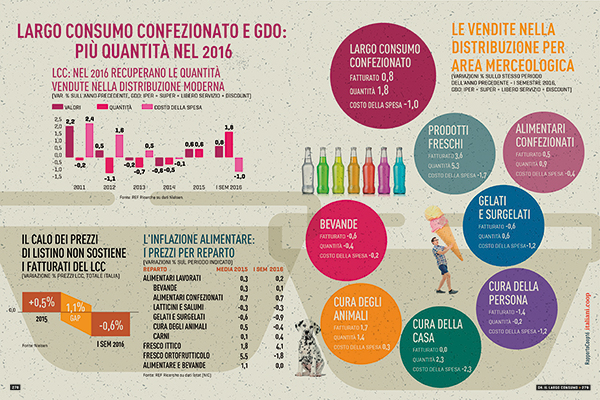The new Italians? Lean and green, intimately tied to the web and with fewer savings in the bank
We propose a summary of the subjects dealt with in the “COOP 2016 Report”, that analyses the run of the various consumer segments and the evolution of retail; in particular it concentrates on the trajectories of the recovery comparing Italy and Europe, regarding changes in the household and changes in spending patterns.
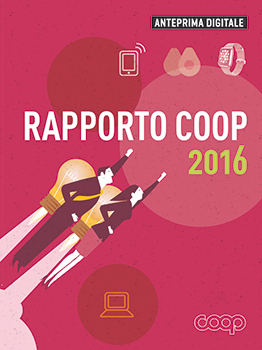 A rigidly immobile country, where the recovery balks at taking off, this the birthplace of the new Italians. Children of the recession, who have grown up in a society that is evermore liquid and flexible, they stand-out from their European counterparts by winning places high up in the ratings (however these are not always enviable records of achievement).
A rigidly immobile country, where the recovery balks at taking off, this the birthplace of the new Italians. Children of the recession, who have grown up in a society that is evermore liquid and flexible, they stand-out from their European counterparts by winning places high up in the ratings (however these are not always enviable records of achievement).
The “new Italians” are certainly older and more solitary, poorer and unequal but they have become greener and smarter, cleaner and healthier. Having acquired a resilience to the crisis they are now among the most innovative and experimental of Europe. The smartphone is their true life companion (15 million sold in the last year or +16%), one in 10 has a wearable device around their wrist (second only to the Americans), the old image of the Latin lover has passed over and love too has become virtual.
The internet of things still hasn’t won the day but it shows growth, and at least in their intention 80% of Italians want to make their homes more connected. The web and its services enable free consumption and are freely exploited for the same: this has led to a 2% drop in expenditure or that is 20 billion euros, where a household can save up to as much as 1400 euros a year.
But the Italians are also Europe’s leanest (20 million practice sports while another 16 million make a more token effort as sedentary subjects on the move), enthusiasts - only matched by the Spanish - they subscribe to the sharing economy (5% use the platforms), consider the environment a primary asset and the quest for the sustainable has become a must when shopping.
The quest for mobility is also green: the sale of hybrid cars went up 48% and 57,000 e-bikes were sold in the first half of the year.
This new identity can also be explained by the crisis because one should not overlook that fact that, thanks to the new technological apps and the new behaviour deriving from the same, consumption is ever freer: from communication to information, from leisure time to services. And this is no mean thing. The web and technologies has led to 2% drop in expenditure or that is 20 billion euros, where a household can save as much as 1400 euros a year.
There are also the less enviable records. The new identikit for example includes the consumption of pharmaceutical products to counter anxiety and sleep disorders (10% higher than the European average) or the use of drugs in the private sphere: 31.9 per cent of Italians declare they have taken cannabis at least once (only ‘beaten’ by the French and Danes) and according to the EU Italians are actually second only to the Spanish in taking cocaine (7.6% have used it at least once).
“Super Food” and “Other Food”. The step from here to food is but a short one: the Italians eat less in quantity, but evermore globally (witnessed by the 8% rise in the purchase of ethnic products in the first half of 2016); food is evermore ‘light’ and a “clean” style of eating holds sway. Purifying oneself is the mantra of the new Italians and hence the rediscovery of “ancient” ingredients that have become the “superfood” of today: ginger, quinoa, curcuma… these the words searched for obsessively on the web but also entail a segment that shows growth in sales (the yearly turnover of ginger is up 141% and that of curcuma is up 93%).
In the face of all this mindfulness, bio-products - that continue to show a two digit growth - are now an acquired thing and have taken on the vestiges of mass consumption. This sort of palaeontology of the palate may have been influenced by new forms of religiousness that are making headway in Italy and that mix physical practices, mental concentration, soulfulness; 2 million Italians practice yoga, double the figure for 2011. A trend that has invaded the web where on the special sites and large social platforms a meditation accessory is sold every 83 seconds.
The second option is the resorting to “other food” in the name of the perennial diet: pills, food supplements, “potions” that in Italy generate a market that has pride of place in Europe (2.5 billion the turnover and +7.7% year upon year).
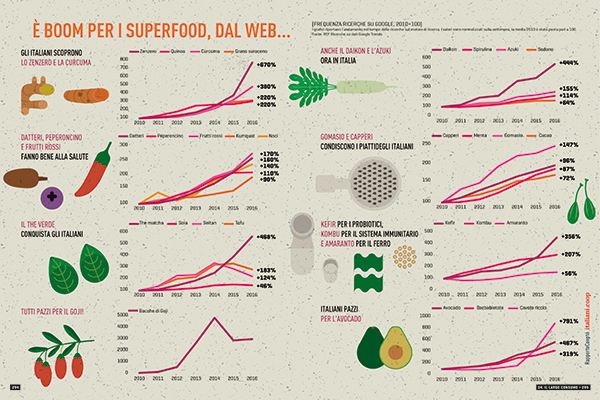
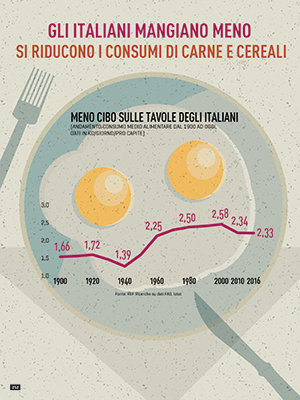 |
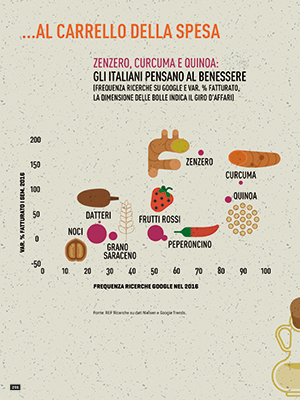 |
 COOP’s forecasts and proposals In face of all this change companies find it hard to keep up and the retail trade is no exception; only the specialised retailers capable of targeting individual consumer groups are economically successful (the profitability of retail specialists is 5 times that of “traditional” retail). «Spending on FMCG is at a standstill, our sales in value are stable, the COOP’s choice of investing in cut-price products has enabled the increase in items sold in 2015. The true challenge though is that of the new Italian consumers. The new Italians love to experiment, seek new products and love things new (more than other Europeans) - as COOP Italia President Marco Pedroni explains to us - and we are innovating both in terms of product (the new PAM is in the launch phase, involving 4000 references and a turnover of 3 billion euros, featuring 27% in value and 33% in quantity), as well as format (after having successfully won the challenge of Expo, the Supermarket of the Future now becomes a reality in Milan’s zona Bicocca). |


